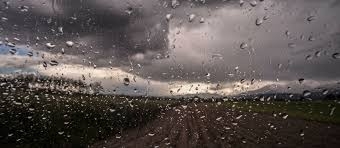Rain is wonderful stuff. If it comes and washes the accumulated salts of the last several years out of the root zones of citrus and avocado, that's a good thing. But what happens if there is a little too much rain? In the winter of 2005, Ventura got over 40” of rain, which is 100% more of what is normal. The last time big rains occurred prior to that was in the winter of 1997-98. That year the rains were evenly spaced on almost a weekly basis through the winter and into the late spring and over 50" fell. That year we had major problems with both citrus and avocados collapsing from asphyxiation. The same occurred in 2005, but not so pronounced.
Most rainfall years are not average, usually it is more or less than average. And sometimes the rains come, and flooding happens throughout California. The winter of 1861/62 saw such flooding that the harbor at Goleta was filled in.
In 2023, we had a lot more rain than we normally see and in Carpinteria it rained 4 inches in July!!!!!! And with the rain we saw mudslides and buried orchards, and with wet soil and winds we saw avocado trees being blown over.
And then came the winter of 2023/24, and there was more rain and more devastation (mudslides, buried orchards, etc.). But in general, trees look good. The consequences of low rainfall and the resulting greater application of salty irrigation water is leaf burn and often Botryosphaerias. After two wet rainy winters, we see much less of this kind of damage.
But there's been more subtle damage going on, especially avocados. It's been particularly hard on young trees with poorly developed root systems and orchards on flat ground. Asphyxiation has happened with the soils being too wet. Excluding air reduces root function, especially in the uptake of iron. It also allows ethylene to accumulate. Ethylene is a plant growth regulator that accelerates maturity. When roots sense ethylene, it causes leaf and fruit drop. The combined lack of oxygen and accumulation of ethylene leads to iron chlorosis and leaf drop. These are characteristic symptoms of asphyxiation and wet soils.
What other problems have we seen with rain, and what can be done to prepare for the unexpected? Learning from the Rain
https://ceventura.ucanr.edu/newsletters/Topics_in_Subtropics102527.pdf
